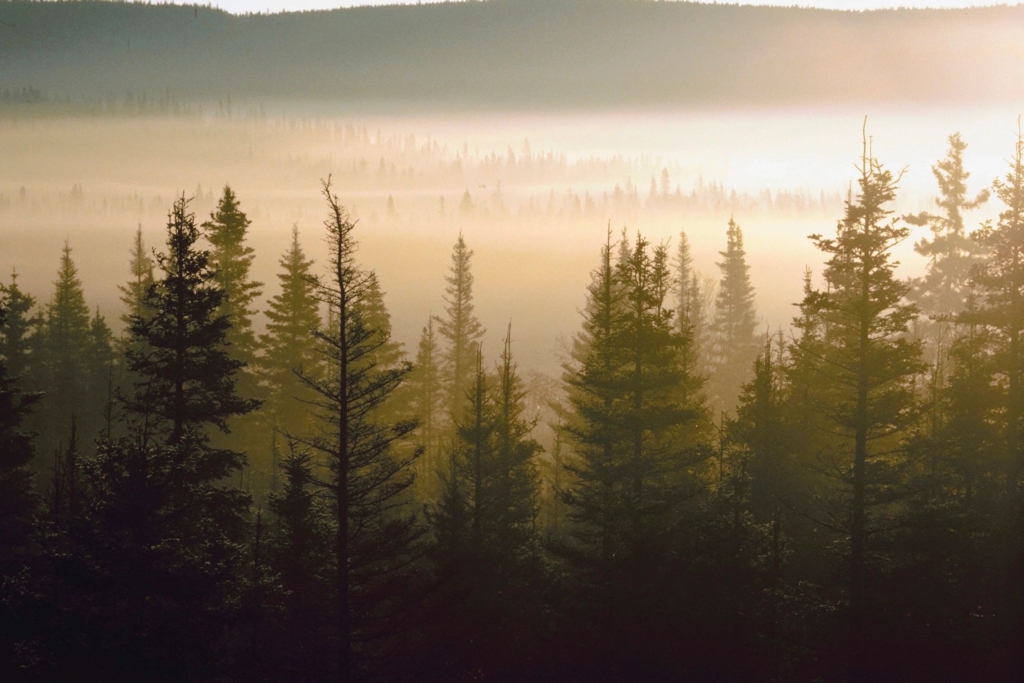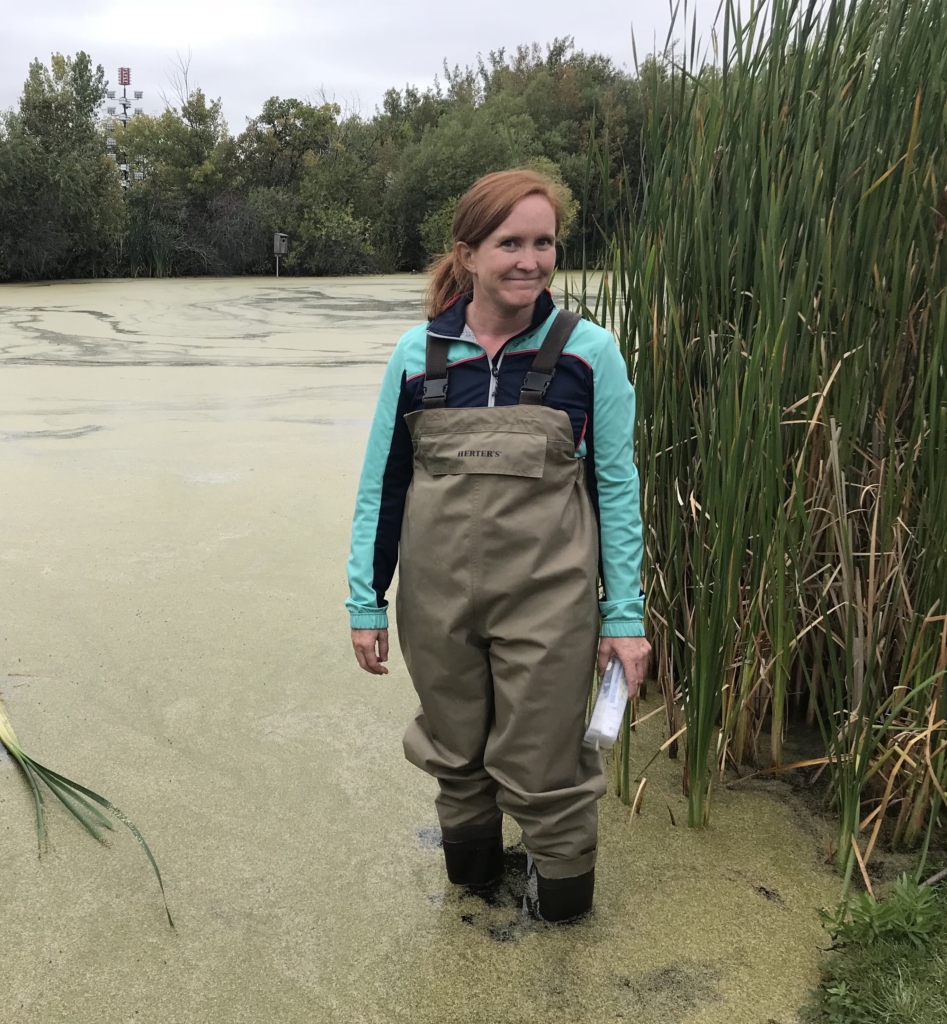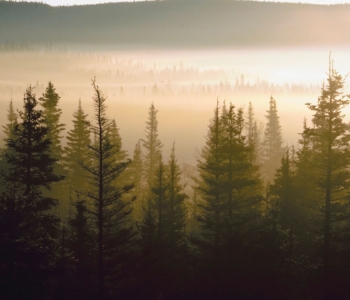Written by: Brian Cole

The heat wave and wildfires that raged through much of Western Canada this summer are dramatic reminders of the damage that can be caused by climate change.
But not all of the environmental impacts from global warming are as easy to observe.
Take, for example, the changes now underway in the lakes, streams and rivers of the boreal zone, an eco-system that covers about 50 per cent of Canada’s land mass and includes a region known as the boreal forest. While these changes may lack the headline-grabbing attention of scorching temperatures or a major blaze, they can be just as devastating to the environment over time.
Just ask Nora Casson, an associate professor at the University of Winnipeg and a Canada Research Chair in Environmental Influences on Water Quality.
Casson has spent the last seven years studying water quality at the International Institute of Sustainable Development’s Experimental Lakes Area (IISD-ELA) in northwest Ontario. Her most recent project involves investigating the effects of climate change on levels of carbon, nitrogen and phosphorus in the freshwater of the boreal zone. The project, which will be completed in 2024, is supported by the Canadian Foundation for Innovation and Research Manitoba, which recently provided her with $100,000 to purchase sophisticated monitoring equipment for the study.
Keeping tabs on water quality in Canada’s North is extremely important.
As Casson explains, the forested areas within the boreal zone provide cultural, economic and ecological benefits to Canadian communities across the country. But the health of the boreal region, and the freshwater within it, depends on maintaining a balance of various naturally occurring nutrients, including carbon, nitrogen and phosphorous. That balance has been maintained in part by the boreal forest’s climate, which has historically featured long, cold winters with big snow packs that typically feed lakes and streams in spring and cooler summers with ample rain.
But that is changing.
“The northern part of Canada is one of the places that is warming the fastest,” says Casson.
As a result, winters in boreal zone areas like the Whiteshell and Northwest Ontario are two weeks shorter on average than they were 100 years ago.
“As temperatures rise, snow packs get less, winters get shorter, we change the way that water moves through the boreal, and that has all kinds of potentially bad impacts.”
Casson offers up the example of a peatland to illustrate her point.
It is estimated that about half of Canada’s boreal zone is covered by forests, 25 to 30 per cent of which are made up of peatlands, a soggy kind of soil-like material that thrives in a climate that is wet and cool. Peatlands are important for a variety of reasons, not least of which is that they are responsible for holding about 60 per cent of all the carbon stored in soil across Canada, according to the Geological Survey of Canada. In other words, peatlands play a major role in absorbing and sequestering carbon – a huge source of environmentally harmful greenhouse gas.

But shorter winters in the boreal forest mean less snow, and hotter temperatures during the summer can mean longer dry spells.
“That can cause the peat to dry out, and all of a sudden you have all sorts of carbon, and the associated nitrogen and phosphorus, exposed to the atmosphere in a way that it hasn’t been,” says Casson. “And that makes it more susceptible to being flushed from a peatland into a stream and then into a lake or, in some cases, burned off into the atmosphere as carbon dioxide and other greenhouse gases.”
In addition to contributing to climate change, the release of carbon, along with nitrogen and phosphorus, can also promote the growth of algal blooms in boreal forest lakes.
Many Manitobans are familiar with the problem of algal blooms in Lake Winnipeg. Caused by excessive levels of nutrients from agricultural runoff and inadequately treated sewage, algal blooms can be defined as a large grouping of algae – unicellular or multicellular organisms that suck the oxygen from water and prevent plants and fish from receiving the benefits of sunlight. In other words, excessive algae can undermine the health of a lake, causing fish to die.
“It (algal blooms in the lakes of the boreal forest) is becoming a much bigger problem and we don’t really understand why,” says Casson. “Is it because of that direct delivery of nutrients to the lake? Does it have to do with having a longer, hotter summer where there is more time for the algal blooms to develop?” she asks. “These are certainly pressing issues” for commercial and recreational fishing across the boreal forest, she says.
Of course, questions about the effects of climate change cannot be answered overnight. Indeed, Casson says climate study is a long-term exercise, one that can take decades.
It (algal blooms) is becoming a much bigger problem, and we really don’t understand why.
Nora Casson, Canada Research Chair in Environmental Influences on Water Quality
“I’ve been working on this since I arrived at the University of Winnipeg seven years ago, but that is not long enough to see the changes in climate. You need to work with partners or researchers who have been collecting this data for a really long time, which is why sites like IISD-ELA are so important.”
Indeed, one of the challenges associated with global warming is that it is often difficult for the average person to see the potentially harmful environmental change that is in fact taking place.
“That’s a challenge with climate change research in general,” says Casson. “If the changes accumulate over decades, that’s longer than human memory,” she says.
Unfortunately, the time frame for change is also expected to change.
As Casson explains the environmental harm caused by climate change is not linear, meaning that even if temperatures in the future continue to rise at the current rate, the damage to lakes and streams would still likely accelerate. The problem is scientists expect temperatures to rise even faster going forward, a development that will only exacerbate the problems in the boreal forest.
“That doesn’t mean that boreal lakes and rivers will end up with same kind of algal bloom problem that Lake Winnipeg has,” says Casson. “The boreal zone doesn’t have the same agricultural (or municipal) development that we have in the Lake Winnipeg basin, so it is a different context. However, it is a region that is really sensitive to change because its normal or natural state is to have very low nutrient concentrations, so any changes to input can disrupt the quality of water quite quickly.”
So how high would temperatures need to rise before we see serious environmental damage in the boreal forest?
Casson says there is no definitive answer to that question at this point, but she hopes her research, along with the work of others, will shed some light on the matter.
“I don’t know if it is possible to say, ‘How long?’ before we see a really dramatic change, whether that is the concentrations getting out of whack, or we see frequent algal blooms or fish kills or changes in fish communities. That’s because ecosystems are like complicated puzzles where all the different parts are interacting, so you can’t always predict what the response will be.”
As an example, she says, you could have nitrogen levels in water rise significantly only to be offset by something else happening in the environment.
“You can have the exact same climate stressor on two streams that are close together, but the streams can respond in opposite directions. And so understanding what it is about the streams, about the watersheds that the streams drain, that is causing those two opposite reactions helps us to understand the fundamental controls on the cycling, and also helps us to understand what makes a landscape more or less resilient to climate change.”
However, Casson cautions against thinking that nature will somehow figure out a way to deal with the man-made effects of climate change. Even resilient ecosystems such as the boreal forest will become more prone to environmental damage as the effects of climate change compound over time.
Which is why, Casson says, Canadians should not take the boreal forest for granted.
“We live in a place that is rich with streams and lakes, so we depend on them and we assume they will always be there,” she says. “I think that gives us a great deal of responsibility to steward that resource for our kids and our grandkids to make sure they also live in a place with the same type of abundant water resources.”
Brian Cole is a Winnipeg writer.

